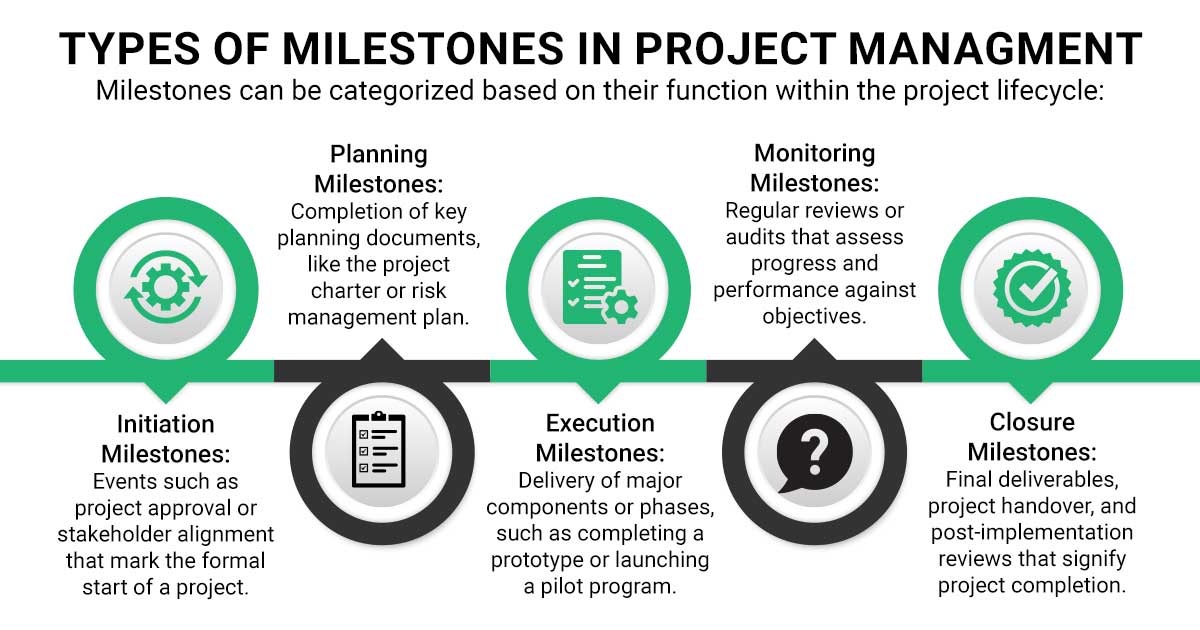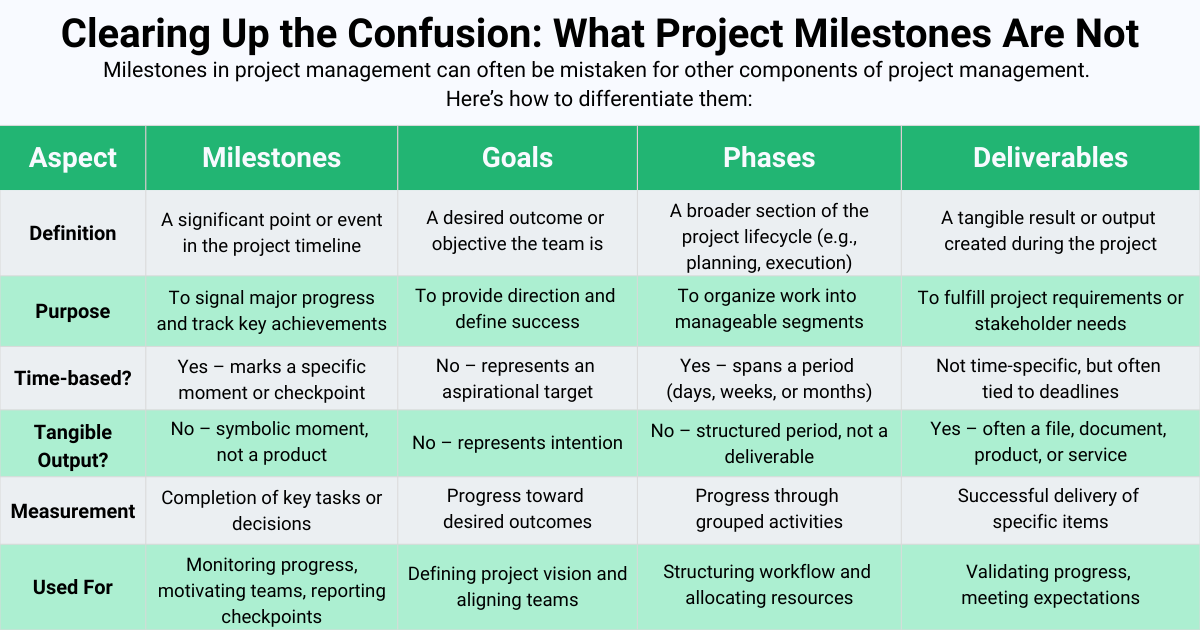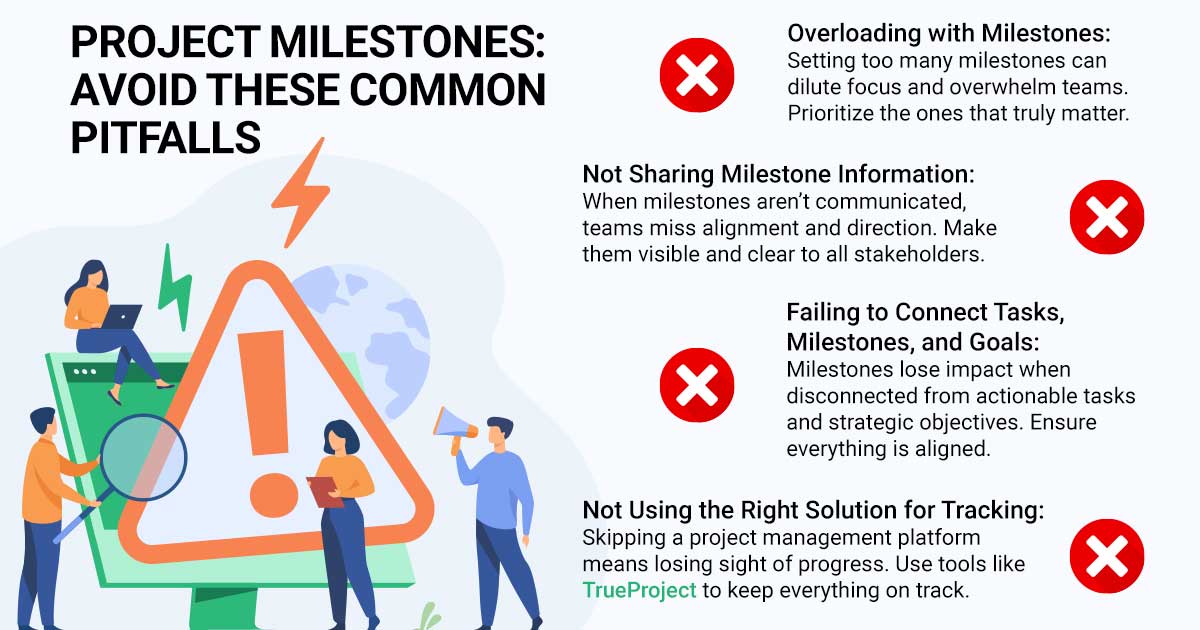
Quick Summary: Project milestones are more than checkpoints. They’re strategic levers that drive clarity, accountability, and timely execution. Yet, most delays stem not from poor planning, but from unseen risks. This article redefines milestone management through predictive intelligence, showing how AI-driven insights can detect delays early, forecast risks, and guide proactive decisions. It offers a framework to identify, assign, and track milestones with precision—shifting from reactive tracking to forward-looking control. For leaders managing high-stakes initiatives, this isn’t about staying on schedule—it’s about staying in command.
Executives value precision, primarily when determining the success or failure of strategic project delivery. Structured plans do more than look good on paper. They cut waste, tighten timelines, and help teams execute with discipline. Organizations prioritizing project management milestones waste 13 times less money by delivering on their initiatives more effectively (Project Management Institute).
Yet, despite careful planning, one detail is often underestimated: the project milestone. Milestones are visible progress markers that keep execution on track and leadership informed. Without them, teams may remain active but directionless.
With 85% of project managers handling multiple initiatives simultaneously, project milestone visibility becomes essential, not optional. It provides teams with clear short-term targets and gives stakeholders a high-level view of project advancement. However, most delays and cost overruns happen not because milestones were unclear, but because risks weren’t visible in time.
This is where AI-driven predictive project management changes the game. These solutions go beyond traditional tracking by identifying potential delays, forecasting timeline deviations, and flagging emerging risks, well before they impact delivery. Powered by real-time data and stakeholder feedback, the predictive project management solution offers forward-looking visibility that no static timeline can provide.
This guide explores the critical role of milestones in project management—what they are, why they matter, and how the predictive project management solution can help you monitor and deliver projects with certainty. Whether leading a digital transformation or managing a portfolio of strategic initiatives, it’s time to rethink how you plan for progress.
What Is a Milestone in Project Management?
A milestone in project management is a clear point along the project timeline that signals progress or a shift into a new phase. Unlike tasks or deliverables, milestones don’t consume time or resources, indicating a critical moment has been reached. Think of them as signposts. They don’t move the project forward directly but confirm that key activities are complete or that a new stage is ready to begin. These checkpoints help keep execution aligned, timelines realistic, and everyone focused on what’s next.
Definition of a Project Milestone
A milestone in project management represents a specific, measurable point that indicates movement toward a larger objective. It might align with the start or finish of a phase, a client review, a key decision, or the delivery of a critical output. These markers act as signals, clearly showing when a project task has strategic significance or the team must assess, adjust, or accelerate. When used effectively, milestones give teams and stakeholders visibility into what matters most and when it matters most.
Recognizing project milestones is only the beginning; understanding why they matter drives successful project delivery. Let’s explore their critical role in keeping your project on track, aligned, and outcome-focused.
Ready to turn project milestones into meaningful momentum? Don’t just track progress, predict it. Discover how you can use data-driven insights to stay ahead of delays, risks, and surprises. Learn how TrueProject redefines milestone success.

Why Are Milestones Important in Project Management?
A project milestone does more than track progress—it drives project clarity, control, and cohesion from start to finish. Here’s how it contributes to successful outcomes:
- Surfaces risks early: Milestones prompt teams to pause, assess, and anticipate. Working toward defined points makes spotting gaps, bottlenecks, or delays easier before they escalate.
- Streamlines resource planning: Resource needs become clearer when milestones are mapped early. This foresight simplifies allocation, especially for long-duration or high-complexity initiatives.
- Guides focus and delegation: With milestones in place, priorities sharpen. Teams know what to target next, and project managers can delegate with intent, not guesswork.
- Bridges teams and stakeholders: Project milestones serve as shared reference points. They help stakeholders gauge progress and understand team needs, minimizing disconnects and reinforcing alignment.
- Controls scope creep: Scope changes happen, but milestones help flag them early. They anchor the project to its original intent, allowing teams to identify and address deviations in real time.
The importance of milestones in project management lies in their ability to tie strategy to execution. However, to be effective, milestones must be carefully defined, aligned with outcomes, and shaped with input from the team and stakeholders. To fully realize the value of milestones, you need more than just intent; you need precision in how they’re created, assigned, and tracked. The following section explains how to design and manage milestones that drive real project momentum.

Creating and Managing Project Milestones
1. Identifying Project Milestones
The first step is recognizing which moments truly matter. These are not just task completions, but turning points like events, deliverables, or approvals that signal meaningful progress. To identify them effectively:
- Clarify Project Goals: Break down the main objectives into measurable outcomes. Each milestone should represent a key step toward success.
- Map Project Phases: Recognize distinct stages—planning, execution, and closure—to determine where milestones naturally fit.
- Engage Stakeholders: Collaborate with key stakeholders to align on critical deliverables and decision points that impact progress.
- Leverage Tools: Use the predictive project management solution to visualize timelines and pinpoint logical project milestone opportunities.
- Assess External Factors: Account for dependencies, such as vendor deliveries or regulatory approvals, that could influence your project milestone timing.
2. Setting Milestone Deadlines
Every milestone in project management needs a realistic, clearly defined target date. This provides a structure that keeps the timeline focused and execution aligned. When scheduling project milestones:
- Evaluate Constraints: To set achievable deadlines, consider the iron triangle of project management: time, budget, and scope limitations.
- Sequence Logically: Ensure milestones follow a natural progression, with each phase building on the previous one.
- Align with the Project Plan: Integrate milestones seamlessly into the broader timeline, avoiding conflicts with key tasks.
- Plan for Dependencies: Adjust dates if one milestone relies on another to prevent bottlenecks.
- Build Flexibility: Allow buffer time for unexpected delays without derailing the schedule.
3. Assigning Ownership
A milestone without ownership risks delay. Clear accountability ensures follow-through and transparency. To assign responsibilities effectively:
- Select the Right Team: Assign project milestones based on expertise and workload capacity.
- Communicate Clearly: Define each owner's expectations, deliverables, and deadlines.
- Document Roles: Use the predictive project management solution to track responsibilities, ensuring transparency.
- Encourage Teamwork: Foster collaboration across departments to streamline progress.
- Review Regularly: Confirm that assigned owners have the support they need to meet deadlines.
4. Tracking Milestone Progress
A milestone in project management only adds value if it’s tracked consistently. Visibility enables quick decisions and keeps risks from escalating. To stay on course:
- Use Tracking Solutions: Implement the predictive intelligence-powered project management solution to monitor deadlines, dependencies, and completion status.
- Share Regular Updates: Keep stakeholders informed with concise progress reports.
- Resolve Issues Early: Address delays promptly by identifying root causes and adjusting plans.
- Recognize Success: Celebrate completed milestones to motivate the team and reinforce momentum.
- Measure Performance: Track KPIs like timeline adherence and deliverable quality to assess progress objectively.
Challenges can, and often do, emerge even with well-defined milestones and structured management. The following section outlines the common pitfalls derailing milestone effectiveness and how to avoid them before compromising project success.
Project management milestones should move your project forward, not just mark it. See how predictive intelligence transforms milestone tracking from reactive to proactive. Get your personalized TrueProject demo today.
Challenges of Project Milestone Management
Even the most structured plans can fall apart if milestones are mismanaged. Here are the key issues that can disrupt progress:
- Lack of Clarity: When a milestone in project management isn’t clearly defined, confusion follows. Teams may not understand what success looks like, leading to inconsistent execution and misaligned stakeholder expectations.
- Unrealistic Timing: Setting deadlines that don’t reflect project realities creates pressure, missed targets, and lost momentum. Inaccurate timelines can derail entire phases.
- Vague Task Alignment: A milestone becomes irrelevant if the work tied to it is ambiguous or poorly scoped. A clear task definition is critical to meaningful progress tracking.
- Misallocation of Resources: Projects often run on limited time, budget, and staff. If these are misallocated, even critical milestones may be delayed or compromised.
- Overlooked Dependencies: Ignoring how tasks and milestones depend on one another can create unanticipated bottlenecks. A single misstep in sequencing can trigger cascading delays.

Traditional methods, such as Gantt charts and spreadsheets, provide a static view of milestones, often lacking real-time insights. In contrast, the AI-powered project management solution leverages data analytics and automation to offer dynamic tracking, predictive alerts, and enhanced visibility. These advanced systems enable proactive management and more accurate forecasting. Let’s explore how predictive intelligence empowers proactive project milestone management with real-time insights and data-driven precision.
Leveraging Predictive Intelligence for Milestone Management
Predictive intelligence fundamentally changes how milestones are monitored and managed. Instead of tracking whether a milestone was met or missed, it focuses on when and why deviations may occur, and what to do about them before it’s too late.
Here’s how it transforms the game:
- Anticipating Risks: By analyzing historical performance and stakeholder sentiment data, the predictive project management solution detects warning signs that indicate a milestone is likely to slip, weeks or months in advance. This early detection enables targeted intervention.
- Optimizing Resources: Predictive solutions highlight potential resource constraints or bottlenecks before they affect key milestones. This allows teams to reassign workloads, secure critical support, or adjust schedules proactively.
- Enhancing Decision-Making: With contextual insights, project leaders receive scenario-based recommendations on mitigating threats to milestone achievement, whether through risk rebalancing, phased delivery adjustments, or stakeholder engagement.
For instance, a predictive solution might alert a project leader that a milestone due in three weeks has a 70% chance of delay due to declining stakeholder responsiveness or resource drift. Instead of discovering this in the following review, the project leader can resolve issues before the milestone turns red.
This intelligent, data-driven approach replaces reactive tracking with continuous control, increasing confidence in delivery and strengthening team accountability. However, predictive analytics must be embedded into the broader project methodology to be truly effective. The next section explores integrating milestones into various project frameworks to ensure alignment, visibility, and execution at every stage.
Predictive intelligence isn’t just smart, it’s strategic. Discover how you can anticipate risks, act with confidence, and keep every milestone on course. Explore TrueProject's advantage.
Integrating Milestones into Project Frameworks
Whether you follow a traditional waterfall methodology or an agile framework, project milestones should reflect key decision points, approvals, or deliverable completions that signal readiness to move forward. In waterfall, these often align with the end of each phase. In agile, milestones might coincide with sprint reviews, backlog readiness, or feature rollout decisions.
For any methodology, milestones in project management should map directly to the work breakdown structure (WBS)—linking strategic objectives to tactical execution. They must also be synchronized with timelines, dependencies, and stakeholder review cycles to ensure visibility across the delivery chain. When embedded properly, milestones serve as project progress indicators and alignment drivers. They help teams prioritize, keep stakeholders informed, and create natural moments for reflection, reforecasting, and risk recalibration.
Done right, project milestone integration creates a transparent system of control that ties planning to performance and strategy to execution.
Rethinking Project Milestones: From Missed Targets to Predictable Outcomes
When projects fall apart, it’s rarely because teams stop working; it’s because they lose sight of what truly matters when it matters most. Milestones aren’t calendar checkpoints but critical indicators of momentum, risk, and readiness. Relying on static plans in a dynamic environment only blindsides decision-makers. What’s needed is not just visibility but anticipation. That’s where predictive project management shifts the narrative.
TrueProject, a KPI-based predictive project management SaaS solution that improves project health and performance, gives you that edge. Continuous risk detection, real-time stakeholder insights, and AI-driven forecasts transform milestone tracking into a forward-looking control system. No more reacting to missed dates—just confident, informed action.
For executives managing high-stakes initiatives, this shift from static tracking to proactive milestone management is the difference between reacting to issues and staying in control. It's time to move from accurate project plans to systems that ensure precise action. If your strategic initiatives demand results, your milestones need more than management. They need TrueProject.
Your milestones don’t need better tracking. They need better foresight. See how TrueProject QuickStart turns project checkpoints into predictive signals—so you act before outcomes slip. Start with TrueProject QuickStart.






